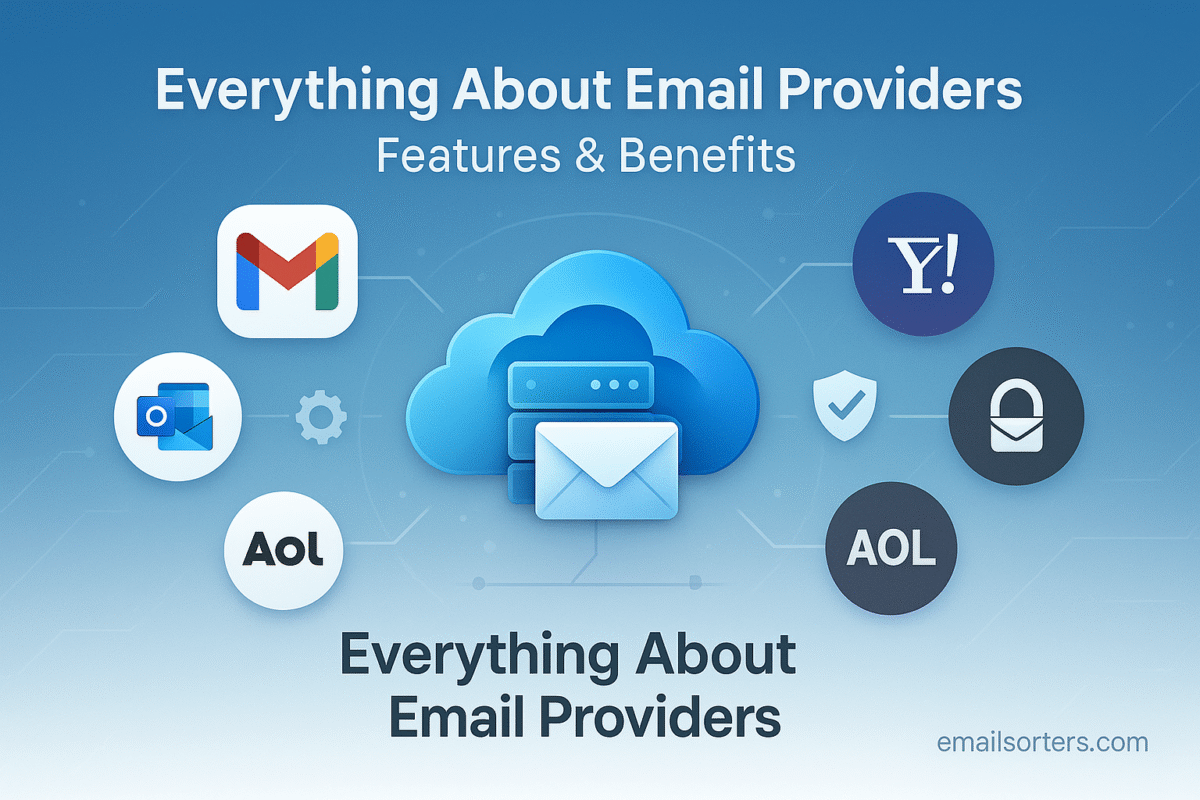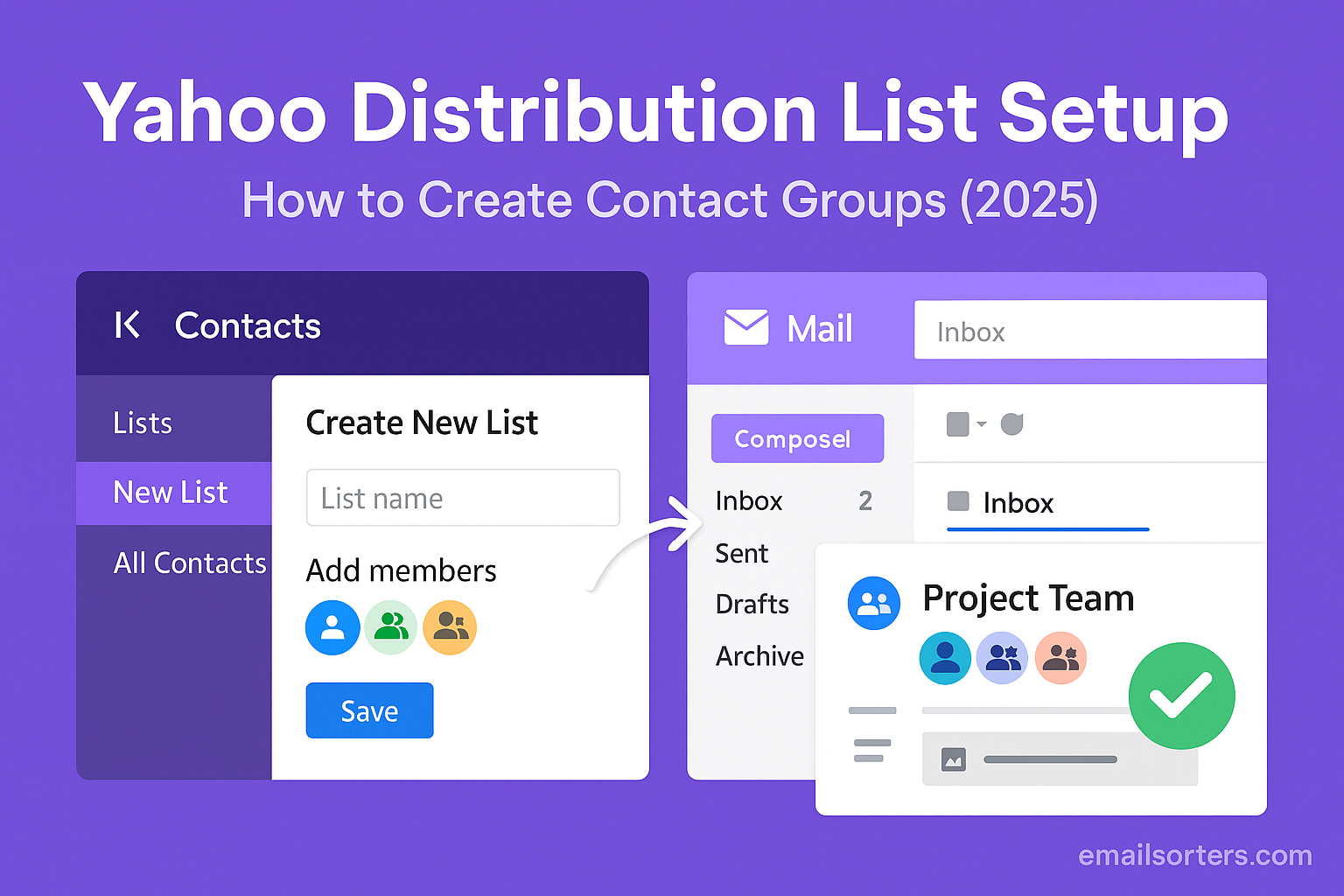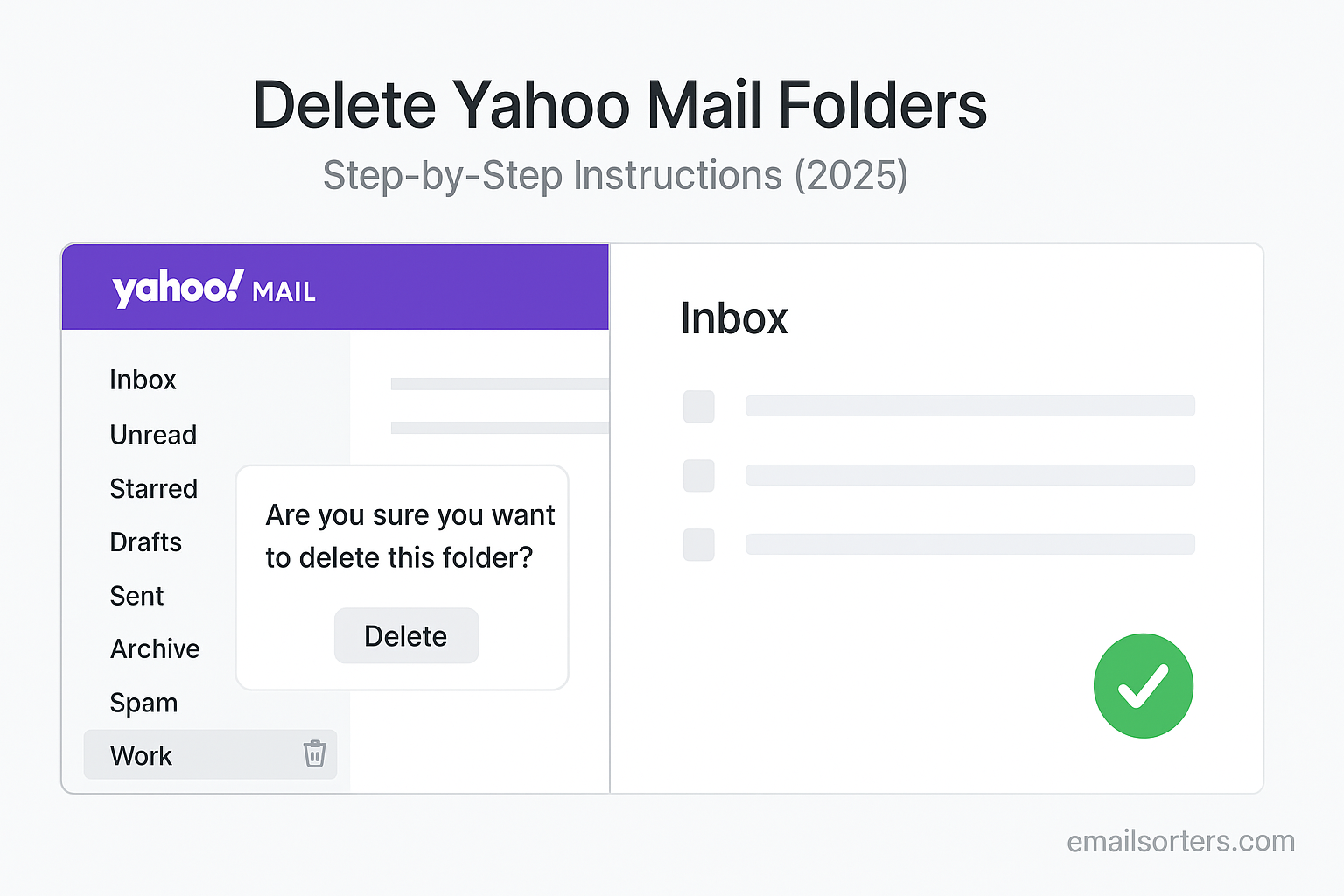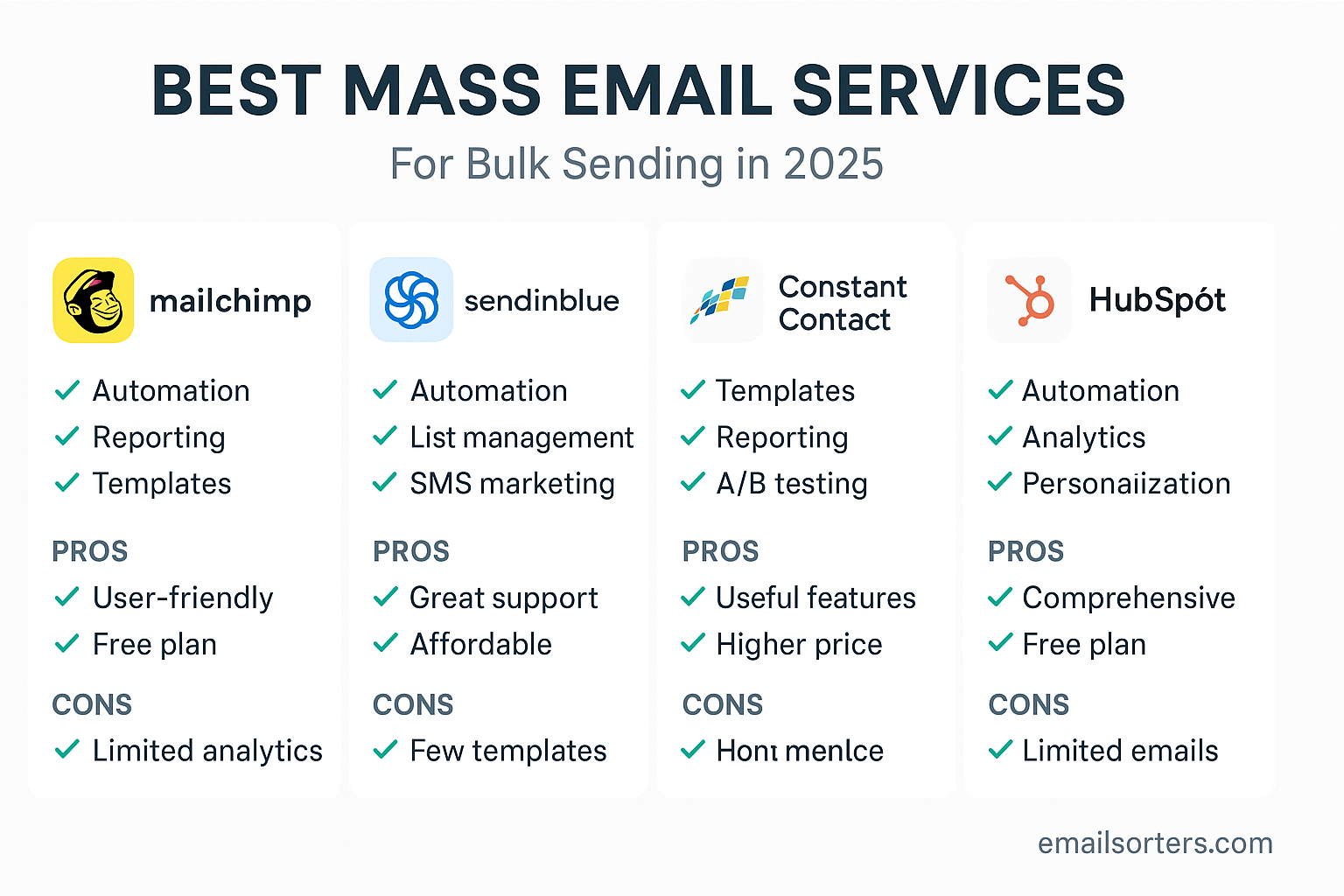An email provider is a company that offers email hosting services. These services are the engine behind every message sent and received, acting as a digital post office for billions of users worldwide. Choosing the right provider is a critical decision that impacts everything from data security to daily productivity. While many services seem similar on the surface, their features, benefits, and underlying philosophies can vary significantly.
This guide explores the essential functions of email providers. We will detail the key features to evaluate and compare the different types of services available. For those new to the topic, understanding the basics of what email is can provide helpful context. A comprehensive Email Overview covers the foundational concepts of digital messaging.
What is an Email Provider?
An email provider, also known as an email service provider (ESP) or mail service provider (MSP), manages the infrastructure required for email communication. They supply the technology and server space that allows users to have a unique email address, store messages, and communicate with others over the internet. Without these services, email as we know it would not exist.
The Digital Post Office Explained
Think of an email provider as a post office for your digital life. It gives you a unique address (e.g., username@provider.com). When someone sends you a message, the provider’s servers receive it and place it in your personal mailbox. When you want to check your messages, you access this mailbox through a web interface or an email client. The provider handles all the logistics of sorting, storing, and delivering your mail securely and efficiently.
How Providers Manage Your Digital Mail
Behind the scenes, providers operate complex server networks. They use standard protocols like SMTP (Simple Mail Transfer Protocol) for sending messages and IMAP or POP3 for receiving them. Their responsibilities include hosting user mailboxes, ensuring messages are delivered to the correct recipients, and protecting users from threats. This technical foundation is what makes global email communication seamless and reliable for the end-user.
Key Features to Evaluate in an Email Service
When choosing an email provider, it is essential to look beyond the basic function of sending and receiving messages. Modern providers offer a suite of features that can greatly enhance security, organization, and productivity. Evaluating these core components will help you select a service that aligns with your specific needs.
Storage Capacity: Your Digital Filing Cabinet
Storage capacity refers to the amount of data you can keep in your account. This includes all your emails and their attachments. Providers typically offer storage measured in gigabytes (GB). Free services might offer anywhere from 5 GB to 15 GB, while paid plans often provide much more. For users who send and receive many large attachments, a generous storage limit is crucial to avoid a full inbox that can no longer receive mail.
Security Protocols: Protecting Your Conversations
Security is arguably the most critical feature of an email service. A secure provider protects your data from unauthorized access. Key security measures include two-factor authentication (2FA), which adds a second verification step to your login process. Another is encryption, which scrambles your data. Transport Layer Security (TLS) encrypts messages while they are in transit, while at-rest encryption protects them on the provider’s servers.
Spam Filtering: Keeping Your Inbox Clean
Spam, or unsolicited junk mail, can overwhelm an inbox and pose a security risk. Effective spam filtering is essential. Modern providers use advanced algorithms and machine learning to identify and isolate spam messages automatically. They analyze sender reputation, message content, and user feedback to become more accurate over time. A good filter saves you time and protects you from malicious content. Some users even employ third-party inbox management tools, such as the service described by Clean Email, to further enhance organization.
User Interface and Ease of Use
The user interface (UI) is how you interact with your email. A clean, intuitive, and well-organized interface makes managing your email faster and less stressful. The service should be easy to navigate on both desktop and mobile devices. Look for features like a powerful search function, customizable layouts, and logical folder organization. A clunky or confusing UI can hinder productivity, no matter how powerful the features are.
Integration with Other Applications
Email rarely exists in isolation. For many, it is the central hub of their digital workflow. A provider that integrates smoothly with other applications adds significant value. Common integrations include calendars, contact managers, cloud storage, and task management tools. This interconnected ecosystem allows for a seamless workflow, such as turning an email into a calendar event or saving an attachment directly to the cloud.
Free vs. Paid Email Providers: Making the Right Choice
One of the first decisions to make is whether to use a free or paid email service. Both options have distinct advantages and are suited for different types of users. Free providers are perfect for casual personal use, while paid services offer features essential for business and professional communication.
The Benefits of Free Email Services
Free email providers are incredibly popular due to their accessibility. They cost nothing to set up and typically offer sufficient storage and features for the average personal user. These services are convenient and supported by major technology companies, ensuring reliability. The business model for most free providers relies on advertising. They may scan the content of emails to serve targeted ads or display promotional messages within the user interface.
Why Invest in a Paid Email Service?
Investing in a paid email service unlocks a range of professional features. The most significant benefit is the ability to use a custom domain name (e.g., your.name@yourbusiness.com). This appears more professional than a generic address. Paid services are almost always ad-free, providing a cleaner experience. They also typically include enhanced security features, larger storage allocations, and dedicated customer support for when you need help.
An Overview of Major Email Providers
The email market is dominated by a few key players, but many other excellent options exist. Each provider has unique strengths and is often designed with a specific user in mind. Understanding the landscape can help narrow down your choices.
Gmail: The Market Leader
Gmail is a leading free email provider known for its massive storage, powerful search capabilities, and clean interface. It is deeply integrated into the Google ecosystem, offering seamless access to Google Drive, Calendar, and Docs. Its advanced spam filtering and smart features, like automatic email categorization, make it a top choice for a wide range of personal and professional users.
Outlook: The Professional’s Choice
Microsoft Outlook is a powerhouse in the corporate world. It is the email component of the Microsoft 365 suite, which means it integrates flawlessly with applications like Word, Excel, and Teams. Outlook is celebrated for its robust calendaring features and its focus on organizational productivity. It is available as a free personal service but shines as part of a paid subscription for business use.
Yahoo Mail: A Classic Contender
Yahoo Mail is one of the original free email providers and continues to serve a large user base. Its primary selling point is its extremely generous storage offering, providing users with a full terabyte of space. It also includes features like customizable themes and a view that organizes messages by conversation. A deeper look into the Yahoo Mail overview reveals its full suite of tools for managing digital mail.
AOL Mail: An Enduring Legacy
AOL Mail maintains a loyal following and provides a straightforward, reliable email experience. Like Yahoo, it offers significant storage and has modernized its interface over the years to stay competitive. While no longer a market leader, it remains a solid choice for users looking for a simple and free email service. The complete AOL Mail overview details its current features and benefits.
iCloud Mail: For the Apple Ecosystem
iCloud Mail is Apple’s email service, designed for users of its devices. Its main advantage is its perfect integration with Mac, iPhone, and iPad through the native Mail app. It offers a clean, ad-free experience and syncs effortlessly across all Apple products. The decision between Gmail vs iCloud is a common one for Apple users trying to decide between a third-party service and Apple’s native offering.
The Rise of Privacy-Focused Email Providers
In recent years, user privacy has become a major concern. This has led to the growth of secure, privacy-focused email providers. These services are built from the ground up to protect user data, often using advanced encryption methods that even the provider cannot bypass.
What Makes a Provider “Secure”?
A truly secure email provider goes beyond standard security measures. They offer end-to-end encryption (E2EE), which means a message is encrypted on the sender’s device and can only be decrypted on the recipient’s device. Another key feature is zero-access encryption. This means the provider has no ability to read the emails stored on their servers. This model ensures that your data remains completely private.
An Introduction to Encrypted Email Services
Services like ProtonMail and Tutanota are leading examples of privacy-focused providers. They operate on a different business model than free services. Instead of relying on advertising, they are funded by users who pay for premium subscriptions. In exchange, users receive a guarantee that their data is not being mined or sold. These providers are ideal for journalists, activists, and anyone who handles sensitive information.
How to Choose the Right Email Provider for You
The best email provider is the one that meets your individual requirements. To make the right decision, it is important to assess your own needs and priorities. Consider your primary use case, technical requirements, and budget.
A Checklist for Your Decision
Answering the following questions can guide you to the ideal choice. This systematic approach ensures you consider all the important factors before committing to a service.
- What will be the primary use of this email account (personal, business, or both)?
- How much storage do I anticipate needing for my emails and attachments?
- What is my required level of security and privacy?
- Is a custom domain name essential for my professional identity?
- Which other applications or tools do I need my email to integrate with?
- How important is an ad-free experience to me?
- What is my budget for a paid email service, if any?
The Future of Email Services
Email providers are constantly innovating. The future promises services that are even smarter, more secure, and more integrated into our lives. These advancements will continue to solidify email’s role as a central tool for communication and productivity.
AI-Powered Assistance
Artificial intelligence is set to revolutionize the inbox. AI assistants will help draft emails, summarize long conversations, prioritize important messages, and automatically manage your calendar. These smart features will reduce the time spent on manual email management, freeing up users to focus on more important tasks.
Decentralization and User Control
Emerging technologies are exploring the concept of decentralized email. Unlike traditional models where one company controls the servers, a decentralized system would give users more ownership and control over their data. This shift could lead to a more private, censorship-resistant form of email in the future.
Conclusion
An email provider is much more than just an inbox. It is a secure archive, a productivity hub, and a core component of your digital identity. Whether you choose a free service for personal use or a paid plan for professional needs, the right provider can streamline your communication and protect your valuable information. By carefully evaluating features like storage, security, integrations, and user experience, you can select a service that will serve you reliably for years to come.




